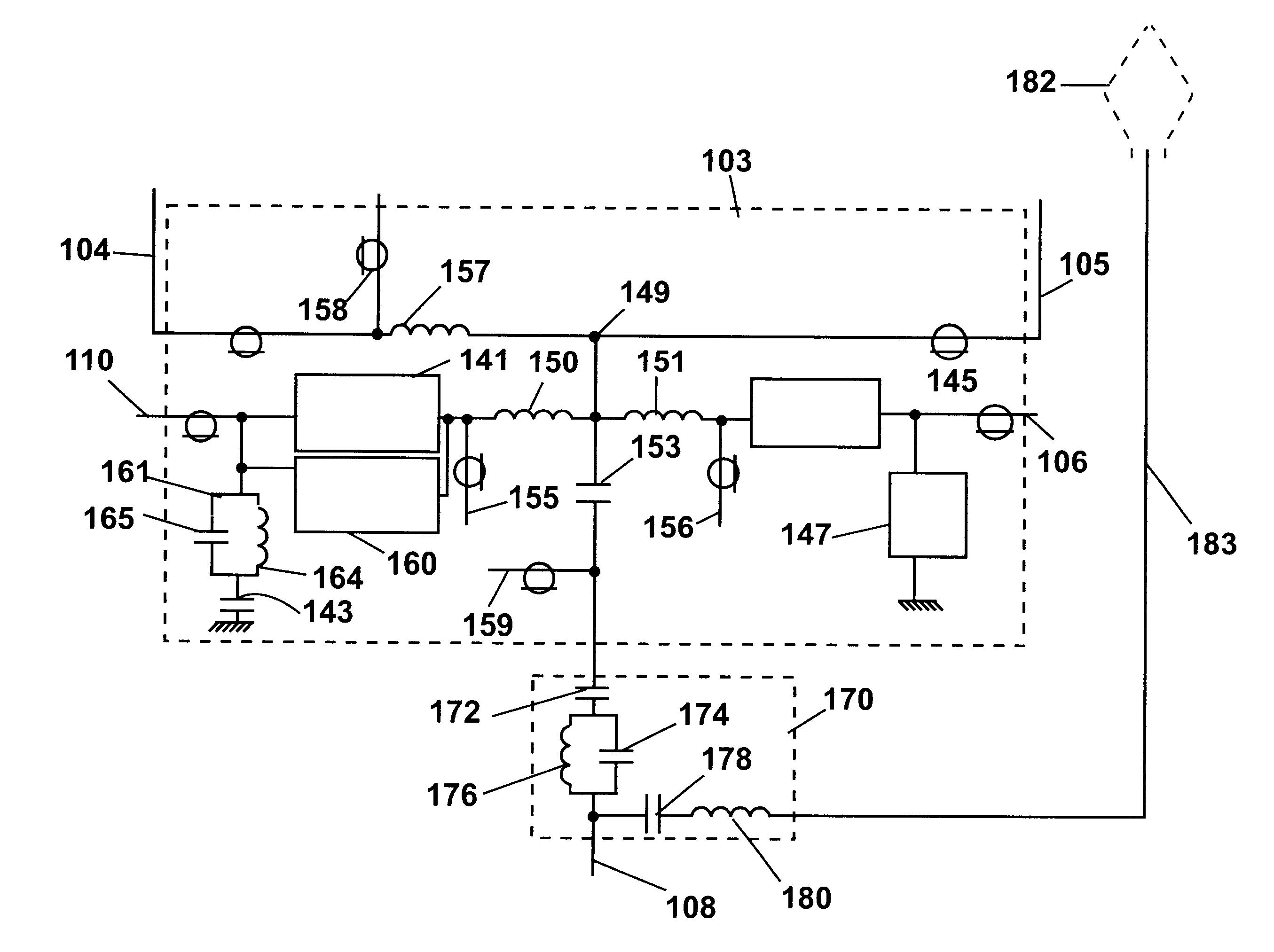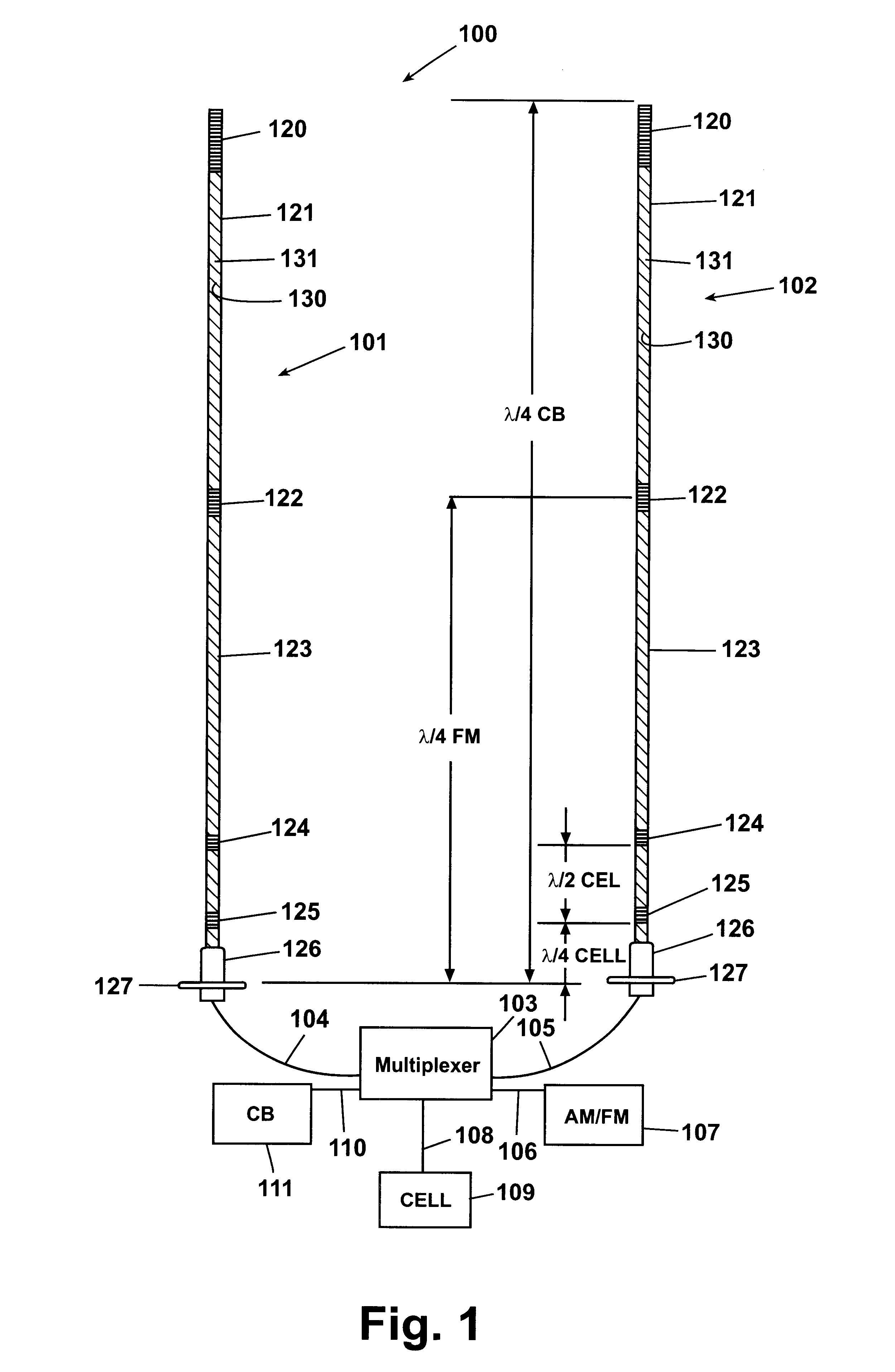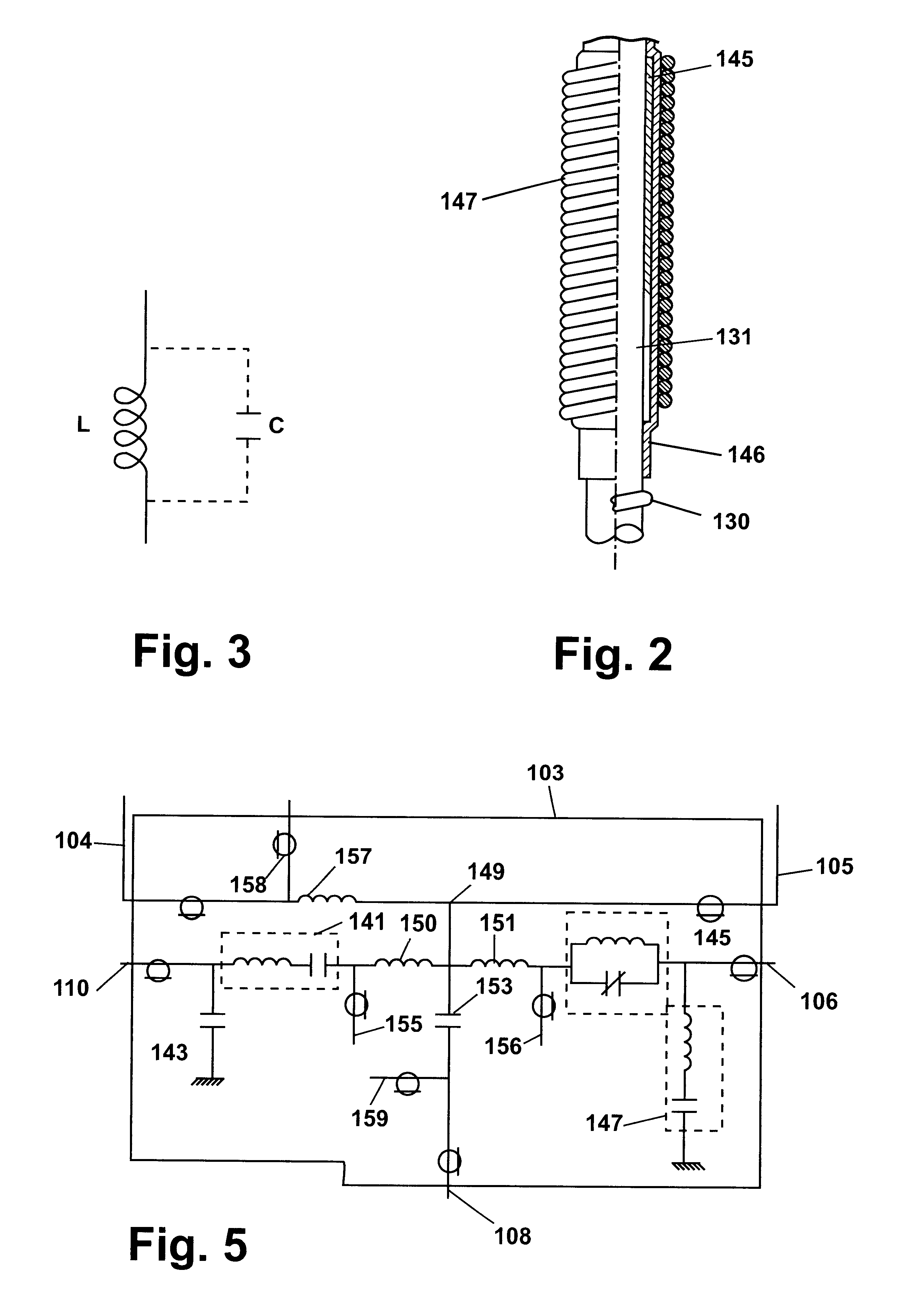Multiplexer for cellular telephone
a multi-channel, cellular telephone technology, applied in the direction of waveguide type devices, elongated active element feeds, resonance antennas, etc., can solve the problems of inability to use antennas with cellular or cb transceivers, inability to achieve optimal am reception, and inability to achieve substantial loss or degradation of signals. , to achieve the effect of not affecting the signal quality
- Summary
- Abstract
- Description
- Claims
- Application Information
AI Technical Summary
Benefits of technology
Problems solved by technology
Method used
Image
Examples
Embodiment Construction
FIG. 1 shows an antenna system 100 comprising a pair of identical antennas 101, 102. The antennas 101, 102 are connected to a multiplexer 103 via conductors 104, 105, respectively. The multiplexer 103 serves to connect the antennas to an AM / FM receiver 107 via conductor 106, to cellular telephone equipment 109 via conductor 108 and to a CB transceiver 111 via conductor 110. Each of the antennas is mounted by means of a mounting nut 126 on a bracket 127 which may, for example, be a side mirror mounting bracket of a truck. The overall antenna is preferably on the order of 54 inches in length. The antennas each comprise an enamel coated conductive antenna wire 130 wound around an essentially cylindrically shaped core 131. The core 131 may be a solid core of fiberglass or the like material having a diameter of 1 / 4 inch. The wire of each antenna extends continually from the top of the core 131 to the mounting nut 126 where each antenna is connected to multiplexer 103 via one of the condu...
PUM
 Login to View More
Login to View More Abstract
Description
Claims
Application Information
 Login to View More
Login to View More - R&D
- Intellectual Property
- Life Sciences
- Materials
- Tech Scout
- Unparalleled Data Quality
- Higher Quality Content
- 60% Fewer Hallucinations
Browse by: Latest US Patents, China's latest patents, Technical Efficacy Thesaurus, Application Domain, Technology Topic, Popular Technical Reports.
© 2025 PatSnap. All rights reserved.Legal|Privacy policy|Modern Slavery Act Transparency Statement|Sitemap|About US| Contact US: help@patsnap.com



